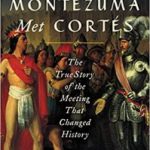By Martina Fasano
Inquiry-based learning. Assessment. Evaluation. 21st century learning. The problem with buzzwords is that they often cause teachers to panic. From the panic comes the question “Am I supposed to get rid of everything I’ve developed for this unit/lesson/course now that they want me to implement 21st century learning tools?” I know because I have been asked that very question by colleagues and peers when the school board rolled out the Google suite of products for use in the classroom. Initially, I found that a lot of teachers believed that showing a YouTube video or showing a slide presentation was them “doing 21st century learning stuff”.
How do we use technology to achieve the learning goals we have for our students each and every day? First, we must understand that “using” technology is not the goal: learning is. Second, if we’ve decided to integrate technology, we must leverage the appropriate best practices that go along with it if we are to make our students successful. For the grade ten applied history class, my department volunteered to pilot a eTextbook that would be a part of a broader school program. When I asked the publishers’ representative if there were any e-Textbook specific resources or tech-based tools, she replied “No. It’s basically a digital version of the book.” Awesome. Together with an “e” version of the Teacher’s Guide, my colleague and I set off to find ways to make the eTextbook program a successful one. That’s when I stumbled upon HyperDocs.
What is a HyperDoc?
In the words of Lisa Highfill, Kelly Hilton, and Sarah Landis, “HyperDocs, a transformative, interactive Google Doc replacing the worksheet method of delivering instruction, is the ultimate change agent in the blended learning classroom.” (This quick YouTube video is a good start too.)
Let’s not confuse a HyperDoc with a glorified worksheet or a document with a bunch of links on it. If done properly, it’s much more than that. The HyperDoc allows the teacher to curate and form the basis of a complex inquiry-based task, all while focusing on using the technology, not teaching WITH the technology instead. Each HyperDoc has students working through seven sections: Engage, Explore, Explain, Apply, Share, Share, Reflect, and Extend.
In my own classroom, I ventured into using HyperDocs by customizing the various templates that can be found at hyperdocs.co . I will admit that I bought the HyperDocs Handbook and used the strategies outlined in it to help me build my HyperDocs, but you can easily make an effective HyperDoc using the strategies and tools found on the website. A “how to” guide is accompanied by a great video that will get you on your way.
My first HyperDoc was for the topics we examine when learning about the 1920’s. Was it successful? Well, I had students clicking on links and sharing ideas with each other, asking questions, arguing over solutions to prohibition, and being able to actually analyze the situations of the era. And that was before we even got to the collaboration part of the HyperDoc! In a grade ten applied class, it is not often that those connections get made with such concise analysis within three days. I was able to have the students work through almost an entire unit independently in a relatively short amount of time. The one drawback is that constructing the HyperDoc took longer than putting together a boring worksheet. With practice, however, I’ve become quite skilled at building a HyperDoc that can drive the inquiry process and, as a result, student learning.
Does a HyperDoc help you differentiate? Yes! Does it help you accommodate students with an IEP? Yes! Does a HyperDoc allow students to “work ahead” while allowing others to spend more time on a topic? Yes! Of all the things I have implemented into my teaching of history, the HyperDoc is by far the one that has been the biggest game-changer. When paired with Google Classroom, you have a one-stop document that allows you to track student progress, work individually with students, and give almost instant feedback to the tasks they are working on. Does it solve every problem in public education? Hardly. But it does focus on the inquiry component as opposed to just dumping technology into the hands of our students and hoping for the best.
This is part 1 in a series. In my next installment, I will be telling you about the various tools you can use for the various sections of your HyperDoc.
Martina Fasano teaches in the Canadian & World Studies Department at St.Maximilian Kolbe Catholic High School in the York Catholic District School Board. She is a published author, blogger, musician, and lover of all things rock’n’roll. She can be reached at www.therockstarteacher.rocks


